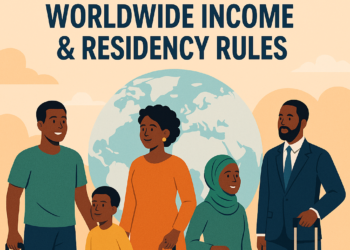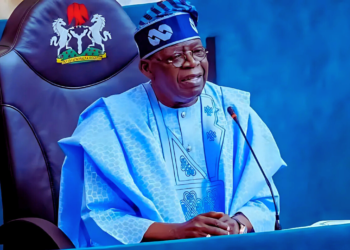The policy of looking inward and retreating from the world, often referred to as “America First,” was a hallmark of President Donald Trump’s administration.
This approach marked a departure from the traditional U.S. foreign policy stance of international engagement and leadership. It had several notable effects on the U.S. standing in the world.
The “America First” policy under President Donald Trump marked a shift towards isolationism and a reduction in international engagement. This approach strained key alliances, disrupted global trade, and created a leadership void on the world stage.
On the other hand, China’s Belt and Road Initiative (BRI) gained momentum during this period, allowing China to expand its influence by investing in infrastructure projects across continents.
President Joe Biden’s administration has sought to reverse this trend. His administration has focused on rebuilding global alliances, rejoining international agreements, and emphasizing diplomacy and multilateralism.
The U.S. aims to regain its standing by recommitting to addressing global challenges, including climate change and nuclear non-proliferation, and by balancing China’s influence through strategic alliances.
The effectiveness of these efforts in restoring U.S. influence will depend on global perceptions and the ability to sustain a consistent foreign policy approach. Let’s explore a bit of these “America First” and its consequences.
Erosion of Global Alliances
One of the most significant consequences of the “America First” policy was the strain it placed on key alliances, such as NATO and relationships with European partners. President Trump’s criticisms of these alliances and demands for increased financial contributions from allies led to tensions and doubts about U.S. commitment to collective security.
This approach also affected trade relationships, notably with the imposition of tariffs on allies like Canada and the European Union, sparking trade disputes that undermined trust and economic cooperation.
Global Leadership Vacuum:
The U.S. withdrawal from international agreements, such as the Paris Climate Agreement and the Iran Nuclear Deal, created a leadership void those other nations, particularly China, sought to fill. This withdrawal eroded U.S. influence in shaping global norms and policies.
China, in particular, used this opportunity to present itself as a champion of globalization and multilateralism, positioning itself as an alternative global leader.
China’s Belt and Road Initiative (BRI)
China’s BRI, a massive infrastructure and economic development project spanning multiple continents, gained momentum during the period of U.S. retrenchment. It provided China with a platform to expand its global influence significantly.
By investing in infrastructure projects in Asia, Africa, and Europe, China increased its economic and political sway in these regions. Countries that benefited from BRI investments often felt a closer alignment with China’s interests.
Economic Impact
The “America First” approach, including trade tensions and tariffs, disrupted global supply chains and had economic repercussions both domestically and internationally. U.S. farmers and manufacturers, for example, faced export challenges due to retaliatory tariffs.
It also affected the perception of the U.S. as a reliable economic partner, potentially discouraging foreign investment and reducing U.S. economic influence.
Shift in Soft Power
The U.S. saw a decline in its soft power, which includes cultural, educational, and diplomatic influence. Policies such as travel bans and rhetoric that alienated immigrants and international students affected the perception of the U.S. as a welcoming and inclusive nation.
China, on the other hand, continued to expand its soft power through initiatives like Confucius Institutes and cultural exchanges.
The election of President Joe Biden marked a shift in U.S. foreign policy. His administration has taken steps to rebuild alliances, rejoin international agreements, and reaffirm a commitment to multilateralism. These changes aim to restore the U.S. standing in the world:
- Alliance Reinforcement: The Biden administration has worked to mend relationships with key allies, emphasizing the importance of NATO and cooperative approaches to global challenges. This has helped rebuild trust and enhance U.S. leadership within alliances.
- Climate and Iran: The U.S. rejoining the Paris Climate Agreement and seeking to revive the Iran Nuclear Deal demonstrates a renewed commitment to addressing global issues through diplomacy and international cooperation.
- Balancing China: While the Biden administration recognizes China’s growing influence, it aims to compete with China strategically while also cooperating on global challenges such as climate change. The “Quad” alliance with Japan, India, and Australia is an example of this approach to counterbalance China’s influence in the Indo-Pacific region.
- Economic Diplomacy: Efforts to resolve trade tensions and negotiate with key economic partners reflect a desire to rebuild economic relationships and strengthen the U.S. role in the global economy.
In summary, President Trump’s policy of looking inward and retreating from the world had significant consequences for U.S. standing and influence, creating a global leadership vacuum that China sought to fill.
President Biden’s administration has embarked on a path of reengagement, emphasizing alliances, multilateralism, and addressing global challenges.
The effectiveness of these changes in regaining lost U.S. influence will depend on various factors, including global perceptions of U.S. commitment and consistency in foreign policy.
The competition between the U.S. and China will continue to shape global dynamics, with diplomacy and strategic engagement playing a critical role in determining the future global order.
For any enquiries please, email our editorial team at [email protected]. If you liked this story, kindly sign up for Clariform Newsletter, a handpicked selection of stories that helps you clarify things that matter and gives you clear signals about your world, delivered directly to your inbox.
Please subscribe to our YouTube channel, and join thousands of Clariform on Facebook, Twitter and Instagram.












